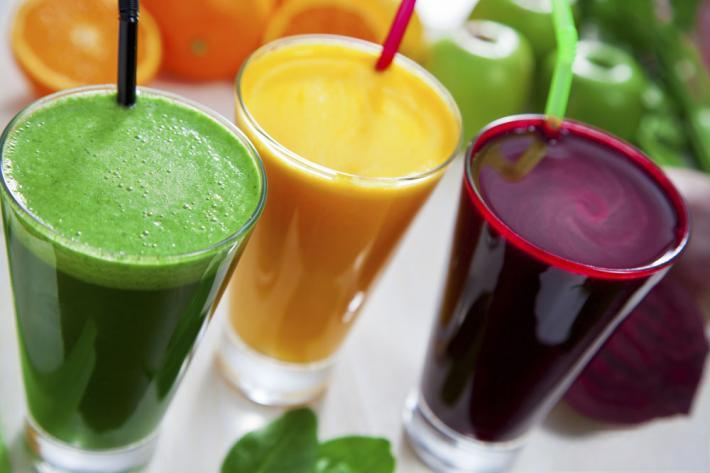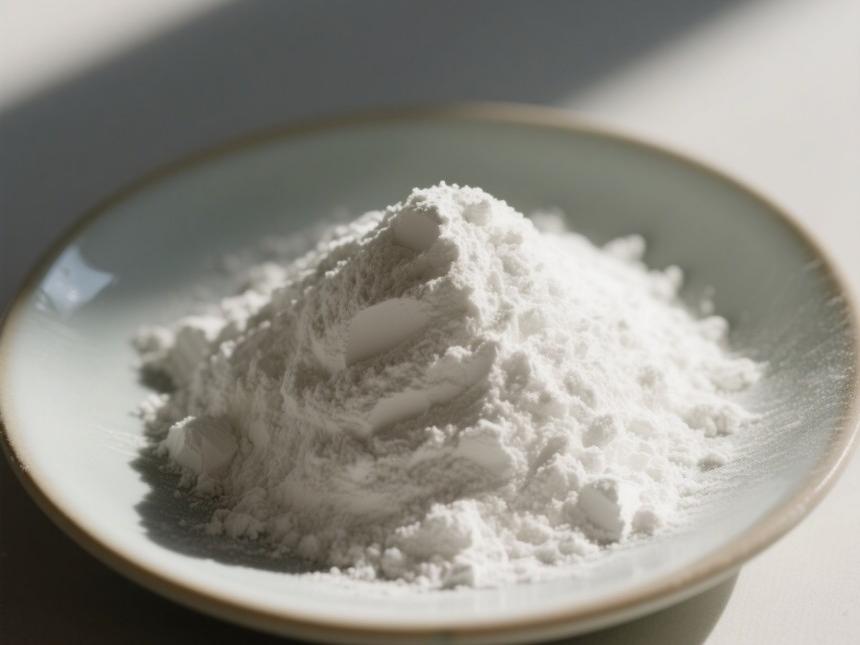À quoi sert la papaïne immobilisée?
Papaya (Carica papaya), also known as wood apple, longevity fruit, or milk fruit, is a perennial small tree belonging to the Caricaceae family and Carica genus. It has a significant cultivation area in the southern regions of China [1]. According to statistics from the Papaya Innovation Team at the Subtropical Crops Research Institute of the Guangxi Zhuang Autonomous Region, the cultivation area of papaya in Guangxi is approximately 4,000 hectares, accounting for about 60% of the national cultivation area.
La papaïne (EC: 3.4.22.2) est une classe d’enzymes protéolytiques contenant du thiol provenant de la papaye des fruits tropicaux, largement présente dans les racines, les tiges et les feuilles des papayes [2], et particulièrement abondante dans le latex frais des fruits non mûrs [3]. La papaïne est une endopeptidase à chaîne polypeptidique unique composée de 212 acides aminés, avec le résidu de cystéine à la position 25 et le résidu d’histidine à la position 158 situés en son centre actif [4]. La papaïne présente une grande stabilité thermique, une large gamme de tolérance au pH et une faible spécificité du substrat, ce qui en fait un catalyseur biologique commun utilisé dans la tenderisation de la viande, le dégommage de la soie et l’amélioration de la qualité des aliments, entre autres applications. L’industrie de la papaïne enzymatique en Chine est encore à ses balbutiements, mais il existe une demande importante sur le marché, ce qui indique un potentiel de développement important et une forte dynamique de croissance, ce qui justifie de nouvelles recherches.
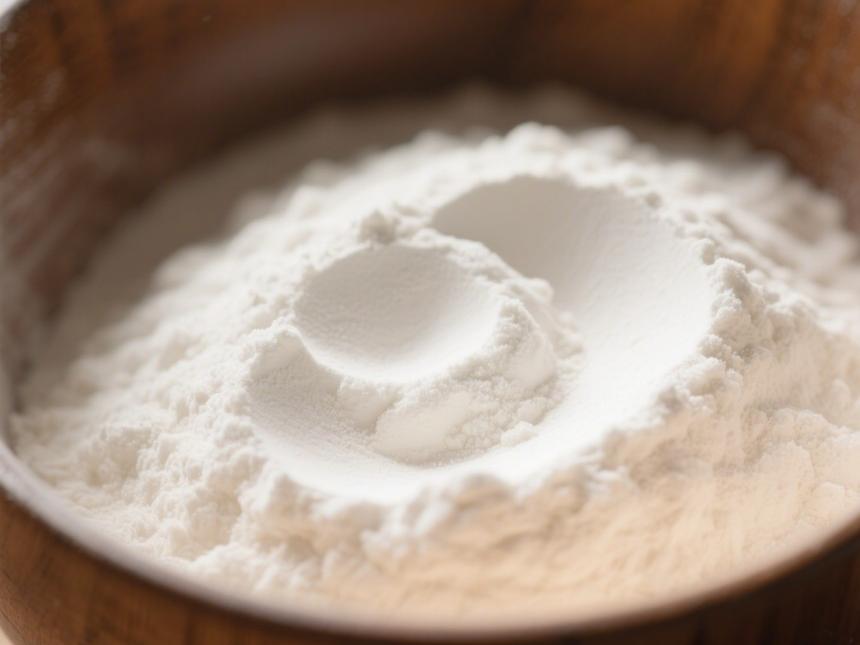
Due to the protein nature of enzymes, they often lose their catalytic activity and become inactive after short-term or single-use applications, rendering them unsuitable for reuse. By immobilizing enzymes onto specific carriers using appropriate methods, enzyme stability can be enhanced, storage life extended, separation and recovery facilitated, utilization rates improved, and reaction times shortened, thereby reducing production costs. Through immobilization, the enzymatic properties of papain can also be significantly enhanced. This paper reviews the application of immobilized papain in various industries, aiming to provide some references for the development and application of immobilized papain.
1 Introduction aux méthodes d’immobilisation de la papaïne
Au fil des années d’exploration et de pratique, les chercheurs ont résumé de nombreuses méthodes efficaces d’immobilisation des enzymes, y compris les méthodes traditionnelles telles que l’incorporation, l’adsorption, la réticulation et la conjugaison, ainsi que des méthodes nouvelles telles que l’immobilisation par membrane [5], l’immobilisation par micro-ondes [6] et l’immobilisation sans porteur [7]. Parmi celles-ci, la méthode d’adsorption, la méthode d’incrustation et la méthode de réticulation du transporteur sont couramment utilisées pour l’immobilisation de la papaïne [8]. Li Lin [9] a utilisé des matériaux de bambou modifiés comme supports et a utilisé des méthodes d’adsorption et de liaison covalente pour immobiliser la papaïne, ce qui a entraîné une papaïne immobilisée avec une stabilité opérationnelle améliorée, une stabilité de stockage améliorée, une tolérance alcaline et une résistance à haute température.
Baidamshina et al. [10] immobilized papain onto medium-molecular-weight (200 kDa) and high-molecular-weight (350 kDa) chitosan matrices, and the immobilized papain exhibited higher thermal stability and longer half-lives. Wei Meiping et al. [11] immobilized papain onto magnetic particles using metal chelation. The immobilized papain effectively degraded black ant protein. Compared to free enzymes, the immobilized enzymes exhibited advantages such as ease of regeneration and stable enzyme activity after regeneration. These results indicate that the thermal stability, alkaline resistance, and other enzymatic properties of immobilized papain can be further optimized and improved, making it more suitable for various applications.
2 Applications de papaïne immobilisée
2.1 Applications de la papaïne immobilisée dans l’industrie alimentaire
Burdock is a traditional Chinese medicinal and edible plant with high nutritional value. The burdockpolysaccharides it contains possess antioxidant, anticoagulant, and blood sugar-lowering properties, among other biological activities, making them highly valuable for both food and health purposes. By using chitosan as a carrier and processing papain under appropriate conditions, immobilized papain can be obtained. Using this immobilized papain to extract burdock polysaccharides (extraction parameters: pH 6.5, time 8 h, solid-liquid ratio 1:20, enzyme dosage 1.8 g/g), an extraction rate of 11.04% was achieved, and the immobilized enzyme retained over 50% of its enzymatic activity after five repeated uses. This study has established an effective method for the extraction of burdock polysaccharides and provides a reference for the extraction of bioactive components from other medicinal and edible plants [12].
Juices, beer, and other beverages may exhibit cold haze (Chill haze) during low-temperature storage or prolonged storage, which affects product quality. As early as the 1990s, Chinese researchers began studying the application of immobilized enzymes to address cold haze issues in beverages. Xu Fengcai et al. [13] used nylon-immobilized papain to treat beer. After treatment with immobilized papain, the turbidity of the beer decreased by 2–11 times, and the protein content decreased by 55% compared to untreated beer. Additionally, the beer retained its original flavor, extended its low-temperature storage time, and the chill haze phenomenon was significantly improved. In addition to using nylon as a carrier, beer can also be treated with chitin-immobilized papain. Jiang Yongming et al. [14] used chitin as a carrier and glutaraldehyde as a cross-linking agent to prepare immobilized papain for beer clarification experiments. The experimental results showed that beer treated with chitin-immobilized papain prepared under optimal conditions had a protein concentration reduced from 56.5 mg/L to 2.7 mg/L, with significant clarification effects, which is beneficial for improving beer quality and commercial value.
La papaïne immobilisée au chitosan peut également être appliquée à la clarification des jus de fruits. Yava§er[15] a utilisé l’acrylate de méthyle réticulé 2-hydroxyéthyle ester de N, n-méthylènebis (acrylamide) et le chitosan gelé réticulé de glutaraldéhyde pour immobiliser la papaïne, et a utilisé la papaïne immobilisée pour la clarification du jus de pomme. Dans des conditions de réaction de pH 4,08, le taux de clarification de la papaïne immobilisée a atteint 31,4 %, tandis que celui de la papaïne libre n’était que de 14,7 %, ce qui est nettement inférieur à celui de l’enzyme immobilisée. Ce qui était proche du taux de clarification obtenu avec seulement le chitosan gelatinisé (12,5 %).
Leila et al. [16] ont mené des recherches sur l’immobilisation de la papaïne à l’aide de nanoparticules magnétiques, et ont utilisé la papaïne libre et la papaïne immobilisée pour traiter le jus de grenade. À 50°C, la turbidité du jus de grenade traité avec de la papaïne libre et de la papaïne immobilisée au jour 14 était respectivement de 44,2 et 44,7, ce qui était significativement inférieur à celle du jus de grenade non traité (92,7). Parmi celles-ci, la papaïne immobilisée a conservé environ 40% de son activité enzymatique après 10 réutilisations eta conservé près de 80% de son activité enzymatique après 20 jours de stockage, ce qui est nettement supérieur à celui de la papaïne libre. Dans un environnement où les préoccupations de sécurité alimentaire sont de plus en plus prioritaires, la papaïne dérivée des fruits s’aligne bien avec les exigences de sécurité de l’industrie alimentaire, ce qui la rend avantageuse pour une application généralisée dans ce secteur. Après l’immobilisation, la papaïne présente une stabilité thermique améliorée, une tolérance alcaline et des propriétés régénératives, ce qui la rend de plus en plus favorisée pour élargir davantage son champ d’application dans l’industrie alimentaire.
2.2 Applications de la papaïne immobilisée dans l’industrie pharmaceutique
The application of immobilized papain in the pharmaceutical industry has also achieved notable progress. Chat 's claw is the dried rhizome of the plant Smilax glabra, a common traditional Chinese medicine. Its polysaccharides possess rich biological activities, such as anti-inflammatory, anti-tumor, antioxidant, and immune-modulating effects [17-19], demonstrating significant medicinal and health benefits. Liao Qiyuan et al. [20] used immobilized papain to remove proteins from crude polysaccharides of cat' grie S dans des conditions optimales: enzyme immobilisée à 12%, température d’hydrolyse de l’enzyme à 60°C, durée d’hydrolyse de l’enzyme à 2 heures et pH 6,0. Avec un taux de rétention des polysaccharides de 73,2% et un taux d’élimination des protéines de 71,3%, réduisant efficacement l’interférence des protéines sur l’action du chat et#39; S griffe polysaccharides. Cette étude fournit également une méthode de référence pour l’extraction et la purification des composants actifs des herbes traditionnelles chinoises à l’avenir.
Immobilized papain has a certain effect on wound treatment [21]. Vasconcelos et al. [22] immobilized papain onto peroxybacterial cellulose (OxBC) membranes. The OxBC-immobilized papain extended the membrane' S temps d’action sur la peau enflammée simulée, cette propriété améliore la membrane d’oxbc ' S pour éliminer le pus et les tissus nécrotiques des plaies cutanées chroniques, offrant une nouvelle possibilité pour les futurs bio-pansements médicaux.

Les fragments de liaison à l’antigène (Fab) peuvent servir de médicaments d’anticorps pour traiter certaines maladies spécifiques. Et plusieurs anticorps à base de fabs ont été approuvés par la Food and Drug Administration (FDA) des États-Unis [23]. Armutcu et al. [24] ont utilisé un bioréacteur de papaïne congelé immobilisé par gel pour digérer les anticorps de l’immunoglobuline G (IgG) humaine et ont effectué une analyse qualitative des produits de digestion. Les résultats expérimentaux ont montré que le taux de digestion des IgG atteignait 80,6 %, le fragment Fab représentant 37,84 %, ce qui en fait le fragment le plus abondant dans les produits de digestion. Cette étude démontre que la papaïne immobilisée peut obtenir efficacement des fragments Fab thérapeutiques par la digestion d’immunoglobulines. En plus des études ci-dessus, de nombreux rapports ont indiqué que la papaïne immobilisée a obtenu des résultats thérapeutiques significatifs dans des applications cliniques, ce qui a des implications importantes pour la poursuite des recherches sur la papaïne dans l’industrie pharmaceutique.
Biopharmaceuticals, characterized by abundant resources, interdisciplinary nature, and low costs, have experienced rapid development and are currently one of the research hotspots. Papain, as a plant-derived natural product, has already demonstrated certain utilization value in this industry. After immobilization, its performance is enhanced, which facilitates further exploration of its additional functions and application pathways, aiming to achieve more breakthrough results in biopharmaceuticals and clinical medicine.
2.3 Applications de la papaïne immobilisée dans d’autres Industries
2.3.1 préparation de peptides bioactifs
Les peptides bioactifs désignent généralement des peptides composés d’acides aminés présentant des compositions et des dispositions différentes, ayant un poids moléculaire inférieur à 6000 D, et présentant une activité biologique et une biocompatibilité élevées [25-28]. Ils possèdent également des fonctions antibactériennes, anti-fatigue et de régulation immunitaire [29], jouant un rôle important dans le maintien de la santé quotidienne et la recherche clinique. Les peptides de soja sont des peptides courts produits par l’hydrolyse de la protéine de soja, présentant des fonctions physiologiques telles que la réduction de la pression artérielle, la réduction du cholestérol, et l’activité antioxydante [30].
Cao Yuhua et al. [31] used chitosan as a carrier and cross-linked papain with glutaraldehyde to immobilize it. Under hydrolysis conditions of 55°C, pH 7.8, substrate concentration of 2.0–3.0 mg/mL, and a flow rate of 0.2 mL/min, they successfully prepared soybean peptides. with a hydrolysis degree of 42.6% and soybean peptide content of 1.453 mg/mL in the enzymatic hydrolysate. Antioxidant peptides possess functions such as inhibiting the formation of reactive oxygen species, scavenging free radicals, and decomposing peroxides [32], making them natural antioxidants with high safety.
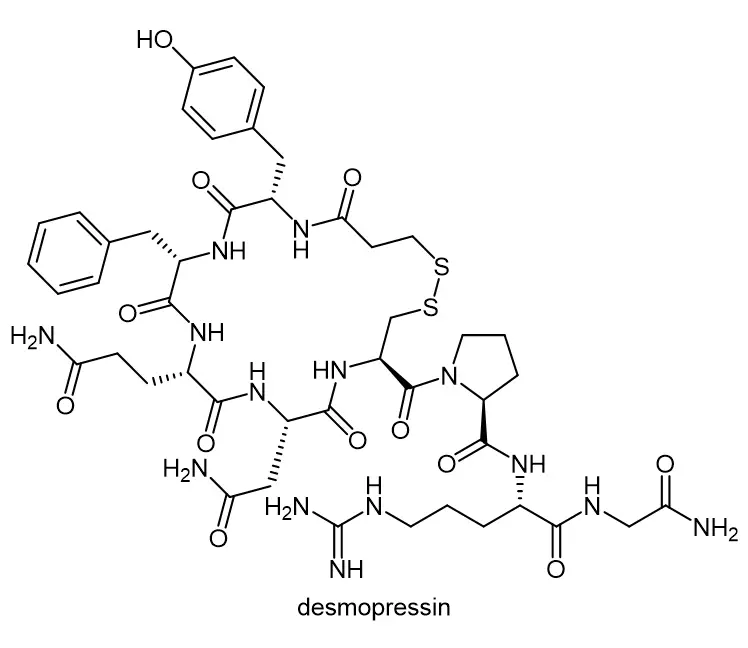
Yang Juxing [33] a utilisé le matériau mésoporeux auto-préparé L-MCM-41 comme support pour immobiliser la papaïne et la protéine de pétoncle hydrolysée pour préparer des peptides de pétoncle antioxydants. Les résultats expérimentaux ont montré que les peptides de pétoncle obtenus après hydrolyse par l’enzyme immobilisée présentaient une activité antioxydante élevée, significativement plus élevée que celle de l’enzyme non immobilisée. La puissance réductrice maximale des peptides de pétoncle obtenus par hydrolyse enzymatique à l’aide d’enzymes immobilisées était environ deux fois supérieure à celle des enzymes libres, et le temps d’hydrolyse enzymatique a été considérablement réduit. Diao Wenjin et al. [34] ont utilisé du poly super-gros pores (méthacrylate de méthyle) comme support pour immobiliser la papain pour l’hydrolyse catalytique de la protéine de levure pour produire des peptides antioxydants de levure. Sous catalyse de la papaïne immobilisée, l’activité antioxydante la plus élevée des produits hydrolysés a atteint 81,2 mol TE/g, dépassant de loin celle des légumes et des fruits. De plus, après 20 utilisations répétées, la papaïne immobilisée a conservé 35% de son activité enzymatique initiale.
2.3.2 industrie Textile
La papaïne peut être utilisée dans des procédés textiles tels que le dégommage de la soie, l’adoucissement du cuir et la prévention des rides de la laine [35-36]. Et ses avantages peuvent être encore augmentés après immobilisation. Xue et al. [37] ont modifié chimiquement la papaïne avec de l’anhydride 1,2,4-benzènetricarboxylique et du benzoate de tétrakis (2-hydroxyéthyl), puis l’ont immobilisée sur un tissu de coton activé. L’enzyme modifiée immobilisée présentait une stabilité thermique, une résistance aux alcalis et une résistance au lavage considérablement améliorées. Lorsque la concentration de détergent était de 20 mg/ml, l’activité de la papaïne de tétraméthyle immobilisée conservait environ 40% de son activité initiale, tandis que la papaïne naturelle était presque complètement inhibée. Cette étude démontre la valeur potentielle d’application de la papaïne modifiée immobilisée sur les tissus de coton dans le domaine des textiles fonctionnels.
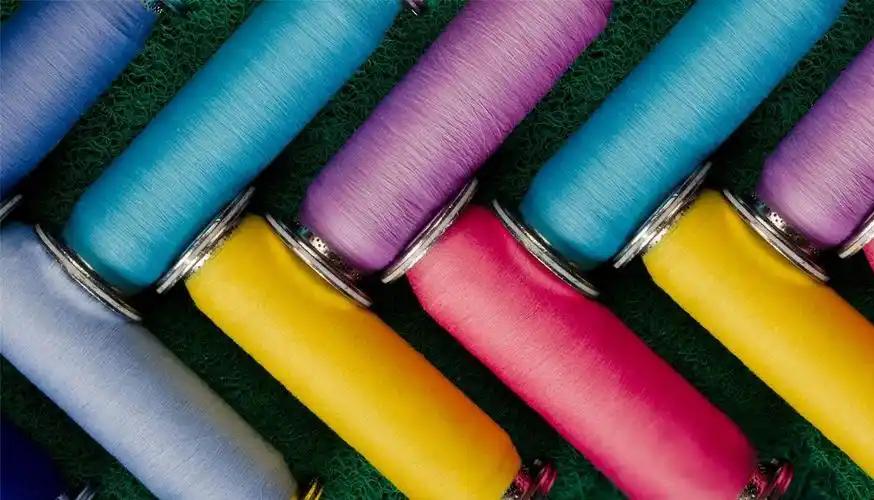
2.3.3 industrie chimique
L’ajout d’enzymes ou de préparations enzymatiques aux détergents peut également servir de catalyseurs. Les Enzymes décomposent certaines taches organiques en molécules plus petites, améliorant leur solubilité dans l’eau et facilitant leur élimination. Les protéases ont été les premières enzymes appliquées dans les détergents [38]. Sangeetha et al. [39] ont immobilisé de la papaïne modifiée avec de l’acide phtalique sur du gel d’amidon de maïs, ce qui a permis d’atteindre un taux de fixation de 98%, ce qui est beaucoup plus élevé que d’autres porteurs comme le kaolin. L’activité enzymatique retenue de la papaïne modifiée après fixation était d’environ 78%, tandis que sa stabilité thermique et sa valeur optimale du pH étaient également améliorées.
Une fois ajoutée au détergent à lessive, l’enzyme immobilisée présentait une activité enzymatique plus élevée que la papaïne libre. Ces résultats expérimentaux démontrent le potentiel d’application de la papaïne modifiée dans les détergents à lessive ménagers. Avec la prise de conscience croissante de la protection de l’environnement, les exigences de l’industrie chimique ont également augmenté. La papaïne est une enzyme d’origine végétale qui ne cause pas de pollution environnementale, ce qui en fait un catalyseur respectueux de l’environnement. Après immobilisation, il peut être réutilisé, réduisant davantage l’élimination des déchets, ce qui s’aligne sur le concept de développement vert et facilite également son développement et son application dans l’industrie chimique.
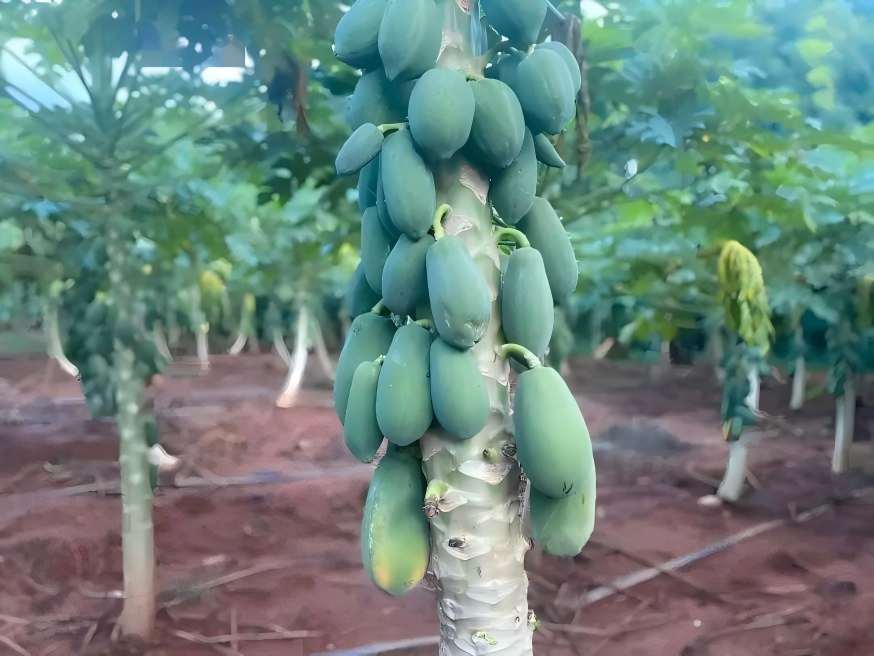
3 perspectives
La papaye est largement cultivée en Chine, et la papaïne a une longue histoire d’utilisation avec une large gamme d’applications, offrant un potentiel de développement significatif. Par rapport à la papaïne libre, la papaïne immobilisée présente une plus grande tolérance au pH et une plus grande stabilité thermique, et peut être réutilisée, réduisant efficacement les coûts d’utilisation, améliorant l’efficacité de la production, et augmentant la valeur marchande de la papaye.
Sur la base de ces caractéristiques, la papaïne immobilisée a obtenu certains résultats dans divers domaines. Cependant, les recherches actuelles sur la papaïne et son immobilisation en sont encore à un stade précoce et la capacité de parvenir à une application industrielle reste limitée. Les réalisations actuelles sont insuffisantes pour répondre à la demande industrielle en croissance rapide en Chine. Cela indique également qu’il y a une place importante pour le développement et la valeur de production dans la papaïne et son immobilisation. Par conséquent, il est urgent pour les chercheurs concernés de développer davantage de méthodes d’utilisation, telles que des techniques d’immobilisation innovantes, la sélection de souches spécifiques aux enzymes, la biosynthèse enzymatique, la séparation et la purification enzymatiques, pour exploiter pleinement et efficacement le potentiel de la papaïne, améliorer la valeur ajoutée de la papaye, élargir les voies d’utilisation des ressources de la papaye, promouvoir davantage la croissance de l’industrie de la papaye et accélérer la modernisation de la Chine.#39; S agriculture de spécialité subtropicale.
Références:
[1] Chen Yan, Zheng Jian, Chen Shimo, et al. Principales caractéristiques morphologiques et analyse des principaux composants, analyse en grappe de 10 ressources de germoplasme de papaye [J]. Chinese Southern Fruit Trees, 2021, 50(4): 69-74.
[2] Wan Jing. Étude sur le procédé d’extraction de la papaïne de la papaye [D]. Haikou: université de Hainan, 2010.
[3] Zhao Dianbo, Chen Qian, Zhang Liyao. Progrès dans l’extraction et l’application de la papaïne [J]. Meat Research, 2010(11): 19-23.
[4] Shen Jiabao. Introduction à papaïne [J]. Subtropical Plant Communications, 1984(2): 51-56, 50.
[5] Liu Ru, Jiao Chengjin, Yang Lingjuan, et al. Progrès dans la recherche sur l’immobilisation enzymatique [J]. Journal of Food Safety and Quality Inspection, 2021, 12(5): 1861-1869.
[6] Huang He. Étude sur l’immobilisation assistée par micro-ondes de la Lipase pour la synthèse catalytique de l’isooctyle d’acide palmitique [D]. Changchun: université de Jilin, 2020.
[7] Ke Caixia, Fan Yanli, Su Feng, et al. Progrès récents dans la technologie d’immobilisation enzymatique [J]. Journal of Bioengineering, 2018, 34(2): 188-203.
[8] Deng Jing, Wu Huachang, Zhou Jian. Progrès de la recherche sur la papaïne [J]. Guangxi Light Industry, 2003(3): 5-7.
[9] Li Lin. Préparation et propriétés des enzymes immobilisées sur des supports de cellulose de bambou [D]. Suzhou: université des sciences et technologies de Suzhou, 2014.
[10] Baidamshina D R, Koroleva V A, Olshannikova S S, et al. Propriétés biochimiques et activité anti-biofilm de la papaïne immobilisée au chitosan [J]. Marine Drugs, 2021, 19(4): 197.
[11] Wei Meiping, Pang Yufeng, Chen Zhengyi, et al. Préparation d’enzymes immobilisées magnétiques régénérables et leur application dans la protéolyse assistée par micro-ondes [J]. Journal of Guilin University of Technology, 2014, 34(4): 748-754.
[12] Gao Mingxia, Miao Jingzhi, Cao Zhehong, et al. Étude sur l’extraction des polysaccharides de bardane à l’aide de papaïne immobilisée par la chitine [J]. Food Science, 2007(9): 226-229.
[13] Xu Fengcai, Li Mingqi. Etude sur la papaïne immobilisée au nylon et ses applications [J]. Journal of Biochemistry, 1992(3): 302-306.
[14] Jiang Yongming, Sui Dexin, Zhao Guojun, et al. Étude sur la papaïne immobilisée par le chitosan [J]. Journal of Biochemistry, 1993(4): 470-474.
[15] Yaver R, Karagzler AA. Immobilisation covalente de la papaïne sur des Cryogels de Poly(méthacrylate d’hydroxyéthyle)-Chitosan pour la Clarification du jus de pomme. Food Science and Technology International, 2020, 26(7): 629-641.
[16]Mosafa L, Moghadam M, Shahedi M. Papain enzyme soutenue sur les nanoparticules magnétiques: préparation, caractérisation et application dans la clarification de jus de fruits [J]. Chinese Journal of Catalysis, 2013, 34(10): 1897-1904.
[17] Zhu Hui. Étude expérimentale sur le mécanisme anti-inflammatoire des polysaccharides de Polygonum cuspidatum [J]. Science and Technology Wind, 2021 (13): 173-175.
[18] Wang Aiwu, Wang Mei, Yuan Jiurong, et al. Etude de l’activité antitumorale in vitro de l’extrait de Polygonum cuspidatum [J]. Natural Products Research and Development, 2004(6): 529-531.
[19] Lv Xiaohua, Wang Huimin, Han Hongxia, et al. Etude sur les activités immunorégulatrices et antioxydantes de cat' S griffe polysaccharides [J]. Chinese Journal of Traditional and Western Medicine, 2010, 35(14): 1862-1865.
[20] Liao Qiyuan, Jing Jia, Wang Xiaoge, et al. Etude sur le procédé d’élimination des protéines des polysaccharides bruts de cat' S griffe grass [J]. Journal of Huaihua University, 2018, 37(11): 9-13.
[21]Moreira FR NF, Vasconcelos NF, Andrade FK, et al. Papaïne immobilisée sur une membrane alginate pour l’application de pansement de plaies [J]. Colloïdes et Surfaces B: Biointerfaces, 2020 (194): 111222.
[22]Vasconcelos N F, Cunha A P, Ricardo N M P S et al. L’immobilisation de la papaïne sur la cellulose bactérienne de membrane hétérofonctionnelle comme stratégie potentielle pour le débridement des plaies cutanées [J]. International Journal of Biological Macromolecules, 2020 (165): 3065-3077.
[23] Su Erzhen, Li Mingliang, Wei Dongzhi. Immobilisation In situ et propriétés physico-chimiques de la papaïne [J]. Journal of Nanjing Forestry University (édition des sciences naturelles), 2014, 38(6): 99-104.
[24]Armutcu C, Orman M E, Bayram E, et al. Purification de la papaïne de liaison Fab et fc immobilisée dans un système de séparateur bioréacteur cryogel [J]. Journal de chromatographie B: Technologies analytiques dans les Sciences biomédicales et de la vie, 2020(1158): 122396.
[25] Yang Chuang. Application de peptides bioactifs dans la santé nutritionnelle [J]. Food Science, 2003(12): 153-154.
[26] Zhang Shouwen. Encyclopédie des aliments de boulangerie chinois: matières premières et additifs alimentaires [M]. Beijing: China Light Industry Press, 2007.
[27] Zhao Xuan, Fu Rong, Qiang Haiyan et autres. Progrès de la recherche sur les Peptides bioactifs [J]. Guangdong Sericulture, 2020, 54(3): 29-30.
[28] Hao Xiaoli, Ji Rimu, He Jing. Progrès de la recherche sur l’administration orale de Peptides bioactifs à l’aide de nanovecteurs [J]. Food Science, 2021, 42(11): 341-348.
[29] Dilshat Y, Parida H, Nurmuhammat A, et al. Effets du peptide de soja sur la fonction immunitaire, la fonction cérébrale et la neurochimie chez des volontaires sains [J]. Nutrition, 2012, 28(2): 154-159.
[30] Zhang Xiaomei. Séparation et Purification de Peptides de soja hypotensifs et hypocholestérolémiques [D]. Wuxi: université de Jiangnan, 2006.
[31] Cao Yuhua, Wang Haifeng, Yang Huiping, et al. Etude sur la préparation de Peptides de soja à l’aide de papaïne immobilisée [J]. Chinese Journal of Grain and Oil, 2009, 24(3): 113-116.
[32] Peng Lele, Mu Taihua, Zhang Miao. Progrès dans l’application des champs physiques dans l’étude des Peptides antioxydants de Sources alimentaires [J]. Food Science and Technology, 2021, 46(8): 59-65.
[33] Yang Jiu-Xing. Préparation de peptides antioxydants actifs à partir de pétoncles à l’aide de matériaux mésoporeux papaïne immobilisée [D]. Harbin: Harbin Institute of Technology, 2014.
[34] Diao Wenjin, Zhang Songping, Wang Ping, et autres. Préparation de peptides antioxydants de levure à l’aide de microsphères interstitielles super grandes immobilisées avec de la papaïne [J]. Chemical Engineering, 2013, 41(11): 1-4, 13.
[35] Deng Yimin, Zhang Gaojun, Jing Lingxiao et al. Etude des conditions de dégommage de la papaïne des fibres de soie [J]. Silk, 2009(8): 20-22, 28.
[36] Shen Yue. Review of papain research and application [J]. Science and Technology Information (Science Education), 2008(11): 313-314.
[37] Xue Y, Nie H L, Zhu L M, et al. Immobilisation de papaïne modifiée avec des groupes d’anhydride sur un tissu de coton activé [J]. Applied Biochemistry and Biotechnology, 2010, 160(1): 109-121.
[38] He Chunliang, Yu Wen. Application de protéase ultra-stable dans un détergent à lessive [J]. China Detergent Industry, 2005(1): 57-60.
[39]Sangeetha K, Emilia A T. modification chimique de la papaïne pour utilisation en milieu alcalin [J]. Journal of Molecular Catalysis B: Enzymatic, 2006, 38(3-6): 171-177.
-
Précédent précédent
Comment immobiliser la poudre de papaïne?
-
Suivant:
Natural Ingredient D Mannose Powder: A Scientifically Proven Solution for Urinary Health


 Anglais
Anglais français
français espagnol
espagnol russe
russe coréen
coréen japonais
japonais